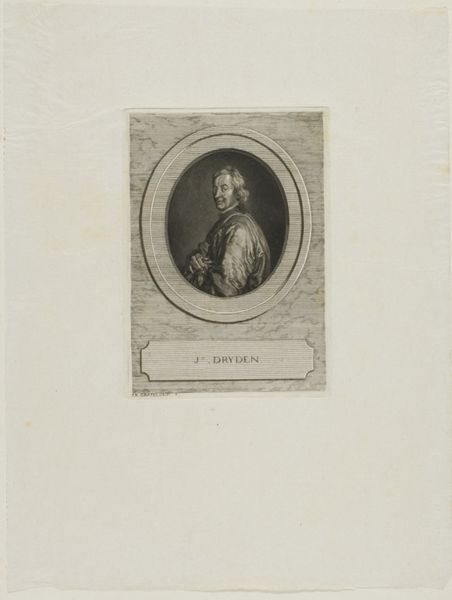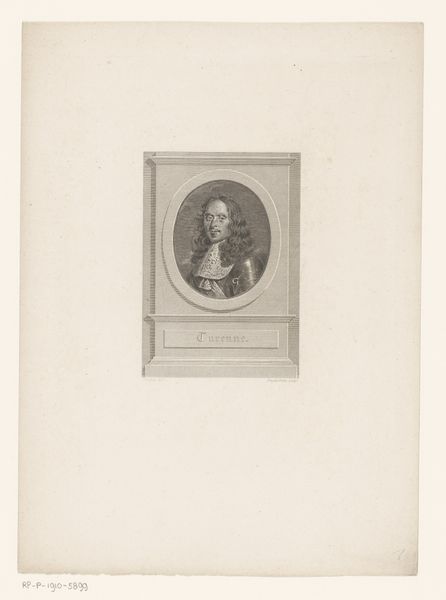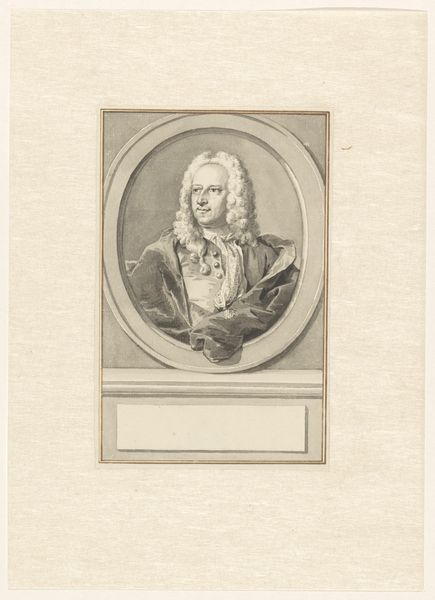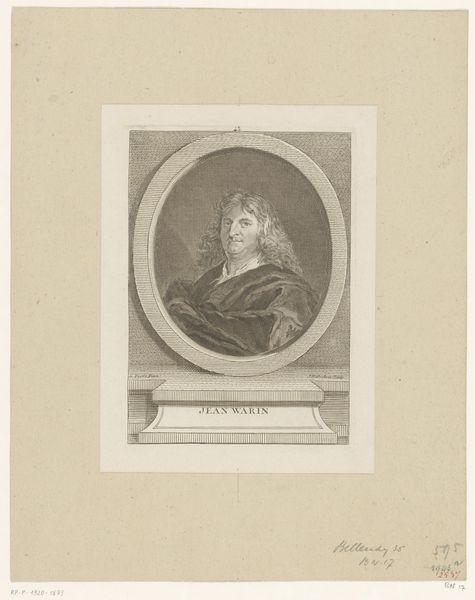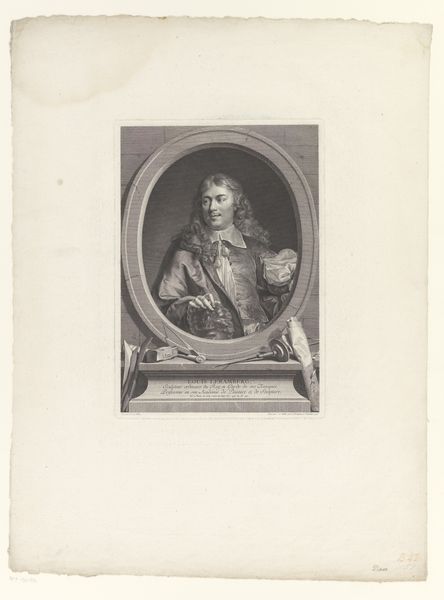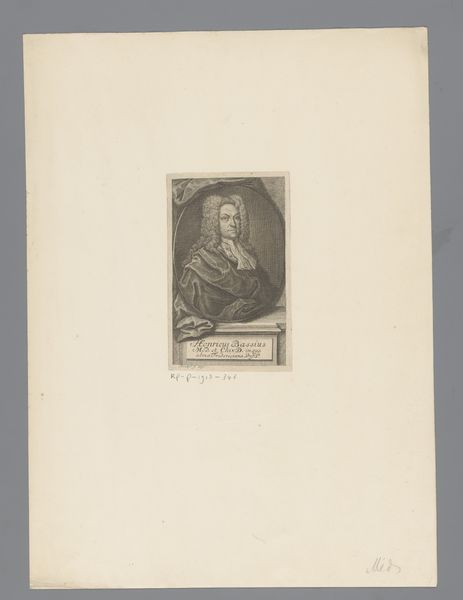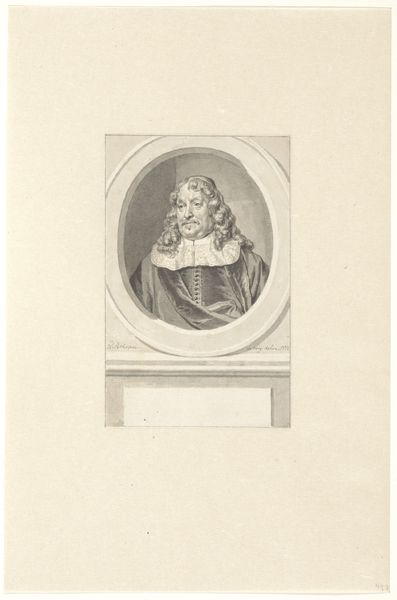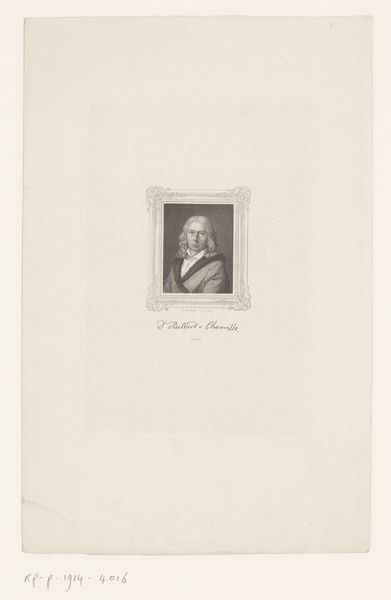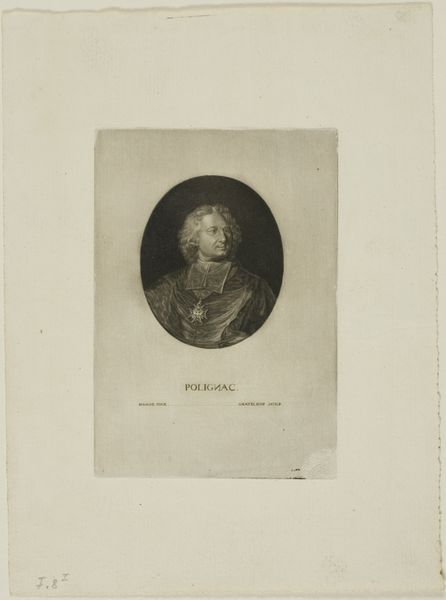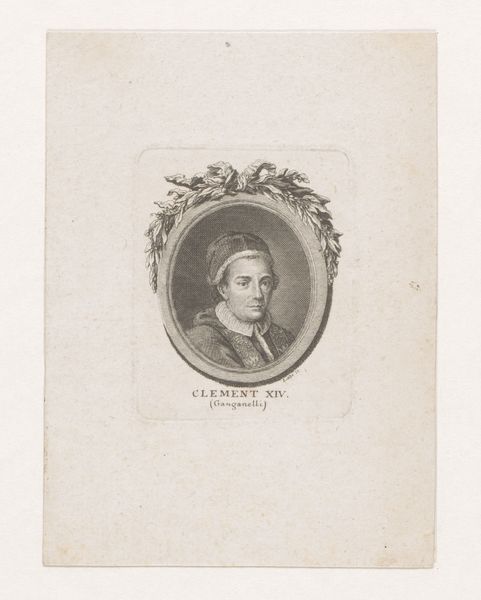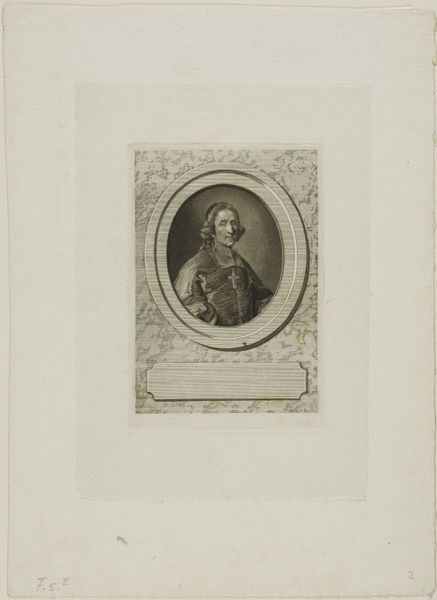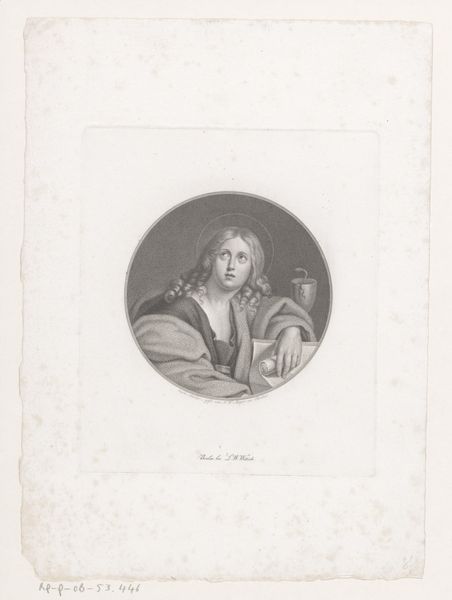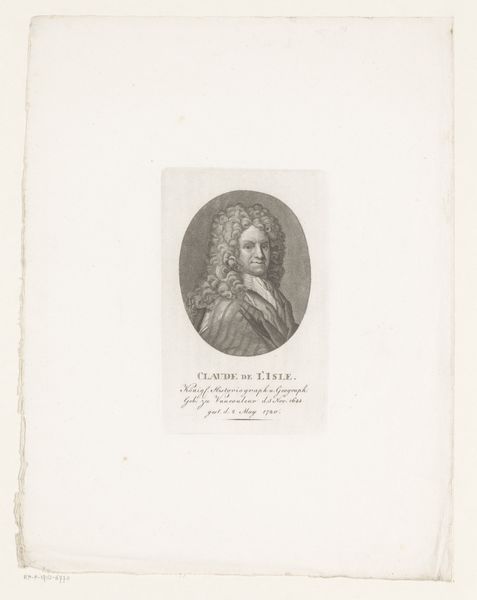
print, engraving
#
portrait
# print
#
engraving
#
realism
Dimensions: 263 mm (height) x 161 mm (width) (bladmaal), 281 mm (height) x 182 mm (width) (plademaal)
Editor: This is Joel Ballin's "Catelino," a print made using engraving techniques, dating back to between 1822 and 1885. It's interesting how a single portrait can feel so imposing. What hidden stories do you see in this work? Curator: Immediately, I'm struck by the formal attire, the way the cape drapes - almost like a royal mantle, suggesting power, status, perhaps even a certain theatricality. Look at the crispness of the engraving, too. This wasn't just about likeness; it was about imbuing the sitter with specific cultural values, a form of visual encoding. Do you think the artist was successful? Editor: I can see what you mean about theatricality. The cloak almost feels too grand for a simple portrait, as though it tries to convey more than just an individual. Curator: Exactly! Consider, also, how portraits were circulated. As a print, “Catelino” could reach a far wider audience than a painting. This raises fascinating questions. Who was "Catelino" and what did the artist try to tell the public? The details are clues—like a crest on the coat. Can you spot any other symbols? Editor: Oh, yes, there's something pinned on the jacket; a medal of sorts, or an emblem? So this piece goes beyond simple representation, entering into symbolism... It's like a memory capsule. Curator: Indeed! The very act of memorializing someone through repeatable image bears tremendous cultural weight. Ballin has provided us a face but concealed what defines him for people. It begs the question: what should endure through portraits – individual personality or social roles? Editor: I’d not thought about prints in quite this way before – almost as designed to transmit cultural messages beyond the sitter’s likeness! That is super interesting. Curator: Precisely. A portrait isn’t merely a depiction; it's an invocation. It's our work to consider all invocations and see what calls us forward still.
Comments
No comments
Be the first to comment and join the conversation on the ultimate creative platform.

